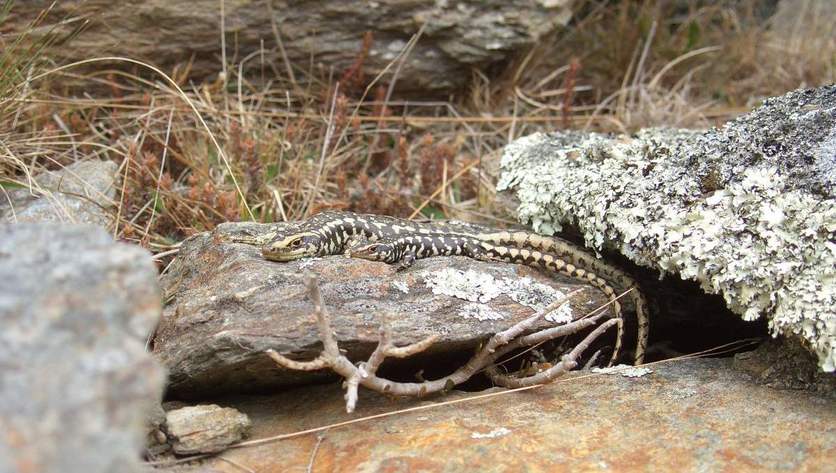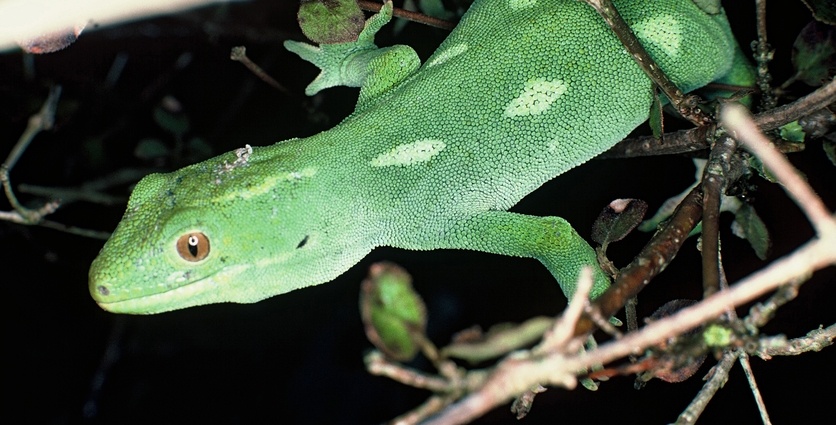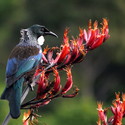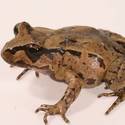Skinks and geckos are the only 2 native families of lizard found in Aotearoa New Zealand (note that tuatara are not lizards). They are vertebrates and belong to the class Reptilia.
All our native skink and gecko species are endemic. Only 1 introduced species – the Plague (Rainbow) skink (Lampropholis delicata) – has successfully established itself here. Scientists think this species probably arrived accidentally on a ship from Australia.
Origins of our native lizards
Scientists believe that the ancestors of our native geckos may have colonised New Zealand over 80 million years ago when it was still part of Gondwana. There is, however, some disagreement about the origins of our native skinks. Some scientists think they arrived 40 million years ago from New Caledonia. Others believe they only arrived in New Zealand within the last 20 million years.
Skinks and geckos: similarities and differences
Our native skinks and geckos share a number of common characteristics. However, there are some significant differences between them. These similarities and differences of our native species are outlined in the following table.
|
| SKINKS | GECKOS |
|---|---|---|
| Kingdom | Animalia | Animalia |
| Phylum | Chordata | Chordata |
| Class | Reptilia | Reptilia |
| Order | Squamata | Squamata |
| Family | Scincidae | Diplodactylidae |
| Genus | Oligosoma | Naultinus, Hoplodactylus |
| Number of native species |
|
|
| Physical characteristics and behaviour |
|
|
| Skin |
|
|
| Reproduction |
|
|
| Communication |
|
|
| Diet |
|
|
| Lifespan |
|
|
| Habitat |
|
|
| Threats |
|
|
Based on New Zealand’s threat classification system, almost half of our skinks and geckos are threatened or endangered. Despite this, our native lizards have typically received less attention and resources than birds and other endangered species.
However, in the past decade, efforts have increased significantly. Staff members of the Department of Conservation have a number of conservation projects focusing on species that are particularly at risk. They frequently collaborate on these projects with zoos, universities and Crown research institutes. These projects include breeding and keeping lizards in captivity, translocation, mammal control and habitat protection.
Nature of science
Scientists often work together towards a common goal, such as conserving a species. Different scientists and organisations have different areas of expertise, and collaborating can often enhance the success of conservation projects.
Ongoing discoveries
The Department of Conservation (DOC) has led a number of research projects over the years, often to very remote and/or difficult to access areas of New Zealand. Since this article was originally written, new species has been discovered – including five in the last few years. DOC estimates that New Zealand has 126 species of lizards, with some lizards only known from just a few sightings. After a discovery, scientists complete genetic testing on the lizard(s) to determine if are new populations of known lizard species or completely new species.
If they aren’t new species, it means we have discovered populations of these lizards in places we didn’t know they were, which is great news.
Dr Jo Monks, Department of Conservation
Related content
In From the smallest bones come the biggest secrets read about the work of former University of Otago Masters student Lachie Scarsbrook. He developed a specialised technique that allows scientists to non-destructively extract ancient DNA from tiny precious remains of ancient geckos and sequence their genomes without damaging the original fossil.
Read the fascinating story of how an elusive new species of gecko was identified and named in 2023.
Activity ideas
Try this activity with your students to help illustrate the key similarities and differences between skinks and geckos.
Conservation ranking in action explores the processes and criteria used to rank animals according to their conservation threat status.
The activity Create a lizard-friendly habitat provides students with ideas on how to attract skinks and geckos to the school grounds.
Citizen science
Skink Spotter NZ is an online citizen science project that identifies whether skinks are present in time-lapse image sequences. The information will inform scientists about the link between skink behaviour and weather conditions.
Useful links
The New Zealand Herpetological Society (NZHS) website has comprehensive and freely available online resources about Aotearoa New Zealand’s reptiles and amphibians.
There is also lots of information on the Department of Conservation website's Lizards section.
The Department of Conservation electronic atlas for amphibians and reptiles provides information on habitat and distribution for all our native skinks and geckos.
Read this 2021 RadioNZ article, Report confirms four new species of lizard in New Zealand, around 70% of reptile species were found to now be declining, five years ago it was 46%.
In this recorded webinar from NZ Predator Free, listen to native lizard expert Carey Knox talk about his search for rare lizards and the discoveries of new populations throughout New Zealand.
Find out more about the pest species – the plague (rainbow) skink on the Pest Detectives website.
This Radio NZ Our Changing World programme from January 2025 looks at the work on bringing back the grand and Otago skinks back to Central Otago.








